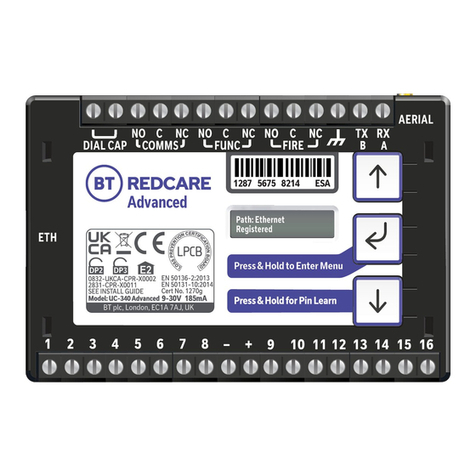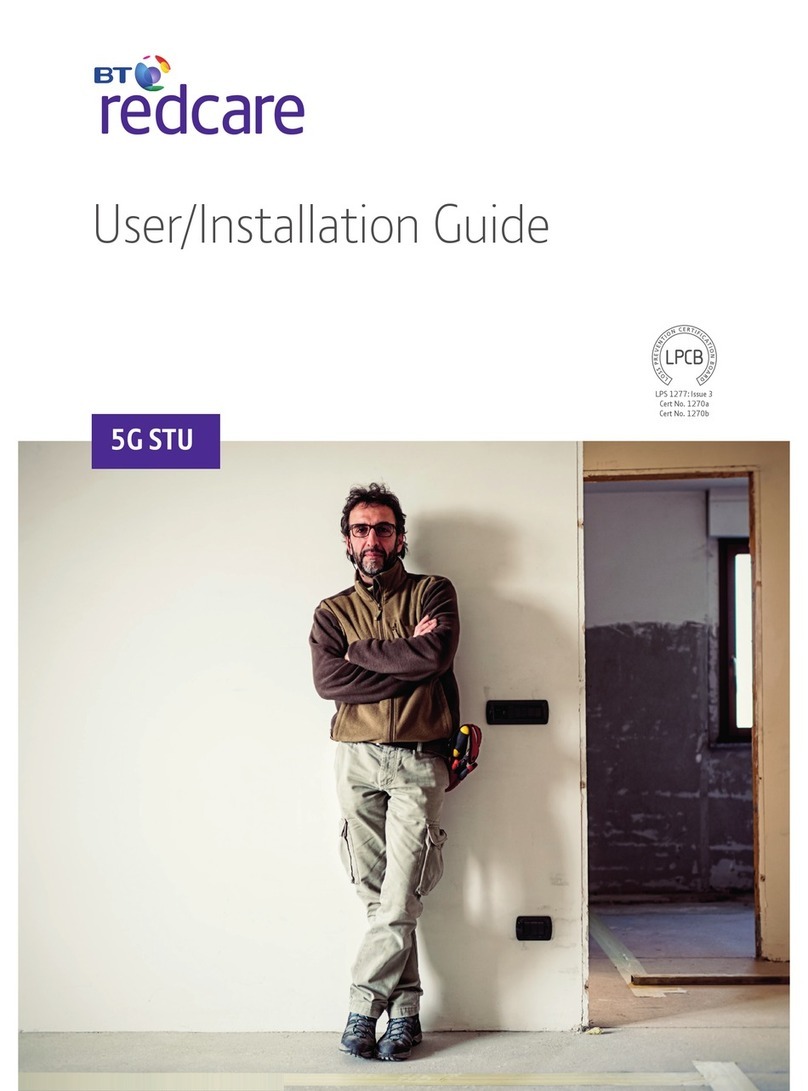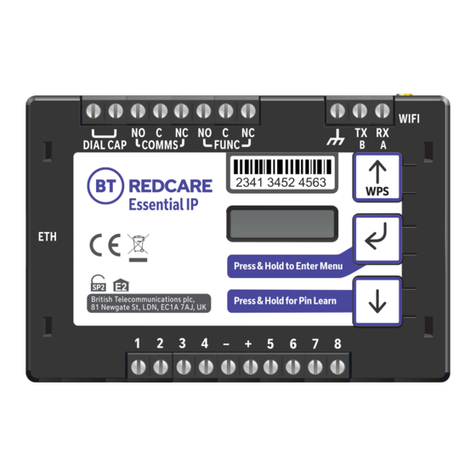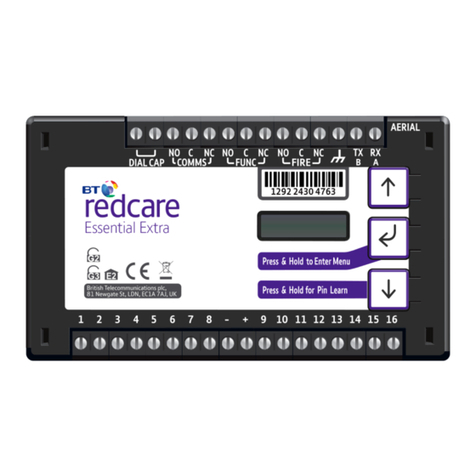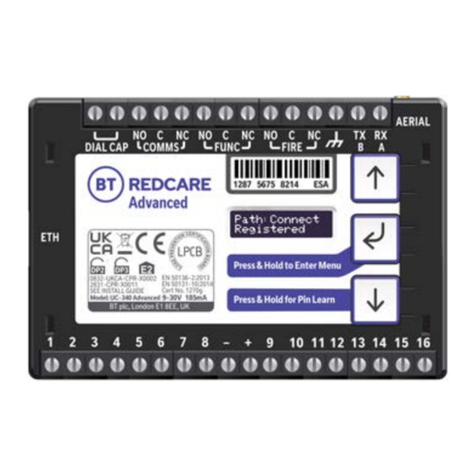Page 4
Scope
This document is provided to support professional installation of the BT redcare range of STU products:
Model Description Part No.
3GSTU-12V 12 V supply, 8 pin alarms 46600-12V
3GSTU-24V 24 V supply, 8 pin alarms 46600-24V
3GSTU-PLI Plug-in 46600-PLI
11zstu 11 Zone, 11 pin alarms 46770
fire stu-24S 24 V fire stu, 3 pin alarms (Standard build) 46600-24S
fire stu-24A 24 V fire stu, 3 pin alarms (ADT) 46600-24A
fire stu-24C 24 V fire stu, 3 pin alarms (Chubb) 46600-24C
fire stu-24G 24 V fire stu, 3 pin alarms (Gardiner) 46600-24G
Static Sensitive Devices
Static electricity is present in our everyday lives. A static charge is generated by friction, and whenever two dissimilar
materials are separated. The imbalance of electrons causes a potential difference of many hundreds of volts. On discharge,
a large current flows for a short time.
Many electronic components can be damaged by such static charges. Component failure may not be immediate or
catastrophic. Electro-Static Discharge (ESD) can cause hidden damage to components, which will affect their reliability.
It is recommended that precautions are taken against damage due to static electricity during the installation and
maintenance of the STU. Suitable ESD protection measures include ensuring that you are earthed (via a wrist strap and a
1 MO resistor) whenever you handle the unit.
Decommissioning Procedure
Important:
If the STU is in service, the Alarm Receiving Centre (ARC) must be contacted to decommission it before it is power cycled.
You must follow these decommissioning instructions when there is a need to change the alarm system settings:
1. Call the ARC and request they decommission the STU.
2. Wait for the ARC to confirm that the STU is decommissioned.
3. Turn off the power to the alarm system completely (i.e. switch off the mains and disconnect the battery).
4. Make the desired changes to the alarm system.
5. Re-connect the battery and switch on the mains to re-apply power to the STU.
6. Request the ARC re-commission the STU.
7. Test the system (see page 24).

